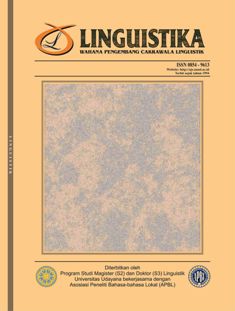The Syntactic Strategies and Equivalence of English Non Finite Verbs Which Translated into Indonesian with Reference to National Geographic Magazine
Abstract
In dealing with problems while translating, translators need to apply translation strategies. It involves finding equivalents which are similar in meaning. The aims of this study are investigating and analyzing the syntactic strategies and equivalents of English non finite verbs which are translated into Indonesian.
This study employed descriptive qualitative method. The data are 130 complex sentences taken from two feature articles in National Geographic Magazines pulished in English and Indonesian on December 2018. The result of study shows that the syntactic strategies found are loan calque, transposition, phrase structure change, clause structure change, unit shift. and sentence structure change. In addition, formal equivalences are mostly found in translation, in comparison with the dynamic equivalences. It can be concluded that the syntactic strategy is applied by the translators to get natural translated text in TL by selecting linguistic equivalences without changing the meaning. The formal equivalence is used when translators maintain the message by focusing on form and content. While dynamic equivalence is applied when the translator does not maintain the form and content but focus more on sense of translation by using natural equivalence which is closest in meaning and shows similar concept in TL.













